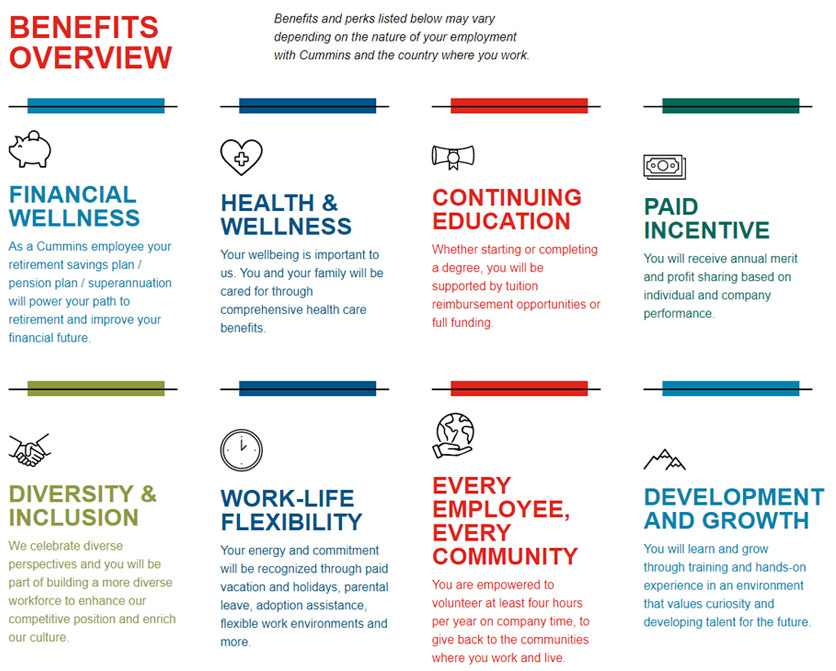Investigates product, system, and/or technology problems,understands causal mechanisms, recommends appropriate action, owns problemresolution and documents results with guidance from more experienced teammembers.
主要重点将包括执行领先产品技术 (PPT)、价值包引进 (VPI) 或当前产品支持 (CPS) 的业务流程,以及执行工程标准工作(ESW)、IDFMEA、故障事故审查团队 (FIRG) 等技术流程,同时使用问题解决七步法、设计审核清单等工具以及支持相关流程及实现优质决策所需的其他专业工具。 征求技术经理、项目主管、其他产品及制造工程师及供应商合作伙伴等利益相关者的意见,以提供促成优质产品决策的信息及建议。
Main focus will include working in business processes of ProductPreceding Technology (PPT), Value Package Introduction (VPI) or Current ProductSupport (CPS) and executing technical processes such as Engineering StandardWork (ESW), IDFMEA, Failure Incident Review Group (FIRG) while using tools suchas 7-step problem solving, design review checklist and other disciplinespecific specialized tools required to support the processes and enable highquality decision making. Obtains input from stakeholders such as technicalmanagers, project leaders, product and manufacturing engineers and supplierpartners to deliver information and recommendations that lead to successfulproject decisions.
Applies academic knowledge and existing experience to take action andmake decisions that progress projects forward without sacrificing projectquality expectations. Examples of thesedecisions include day to day project details, analysis or test work instructiondetails, coordination across discipline areas that are necessary to makequality progress.
Provides independent execution of established work processes andsystems, while still developing technology or product knowledge; engages withthe improvement of systems and processes.
有效促进团队目标、在工作组内产生影响并持续提高对在职位取得成功至关重要的能力。Contributeseffectively toward team goals, exhibits influence within a work group andcontinues to develop proficiency in the competency areas critical to success inthe role.
产品问题解决 - 使用保护客户的流程解决产品问题;确定非随机原因;实施完善、基于数据的解决方案;并确定系统根本原因和建议采取的行动,防止问题再次发生。
Product Problem Solving - Solves product problems using a processthat protects the customer; determines the assignable cause; implements robust,data-based solutions; and identifies the systemic root causes and recommendedactions to prevent problem reoccurrence.
系统能力工程 - 通过在环境背景下进行系统、子系统或超级系统的分析或实验测试来识别系统能力和风险;根据能力协商和核实需求,相应地指导项目范围和系统开发;评估遗留系统与提议的新系统解决方案能力,并在考虑利益相 关者权衡后做出如何最好地实现系统能力的决定。System CapabilityEngineering - Identifies system capability and risks through analysis orexperimental testing of the system, sub-system, or super system in the contextof its environment; negotiates and verifies requirements against capability toguide project scope and system development accordingly; assesses legacy systemversus proposed new system solution capabilities and makes decisions as to howbest to achieve system capability with consideration of stakeholder trade-offs.
避免产品故障模式 - 通过识别接口、功能、功能要求、交互作用、控制因素、噪音因素以及优先化涉及系统的潜在故障模式和潜在故障原因,有效地提高康明斯产品的可靠性,从而减少潜在的产品故障模式。
Product Failure Mode Avoidance - Mitigates potential product failuremodes, by identifying interfaces, functions, functional requirements,interactions, control factors, noise factors, and prioritized potential failuremodes and potential failure causes for the system of interest to effectivelyand efficiently improve the reliability of Cummins’ products.
产品验证和认证管理 - 基于各方意见协调设计验证和系统验证计划的开发,以识别失效模式,同时管理风险和相对优先级;根据工程原理评估分析和实验测试结果,以验证产品是否符合内部技术要求,并验证设计方案是否满足客户 需求;提供建议和技术文档以支持产品决策。
Product Verification and Validation Management - Coordinates thedevelopment of design verification and system validation plans from a varietyof inputs to identify failure modes while managing risk and relative priority;evaluates analytical and experimental test results following engineeringprinciples to verify that products meet internal technical requirements and tovalidate that design solutions meet customer needs; produces recommendationswith technical documentation to support product decisions.
技术文档 - 基于作为技术职能活动一部分获得的知识提供文件信息;与利益相关者沟通,目的是提高技术生产力并将知识有效传授给未能获得第一手经验的人员。
Technical Documentation - Documents information based on knowledgegained as part of technical function activities; communicates to stakeholderswith the goal of enabling improved technical productivity and effectiveknowledge transfer to others who were not originally part of the initiallearning.
Decision quality - Making good and timely decisions that keep theorganization moving forward.
Drives results - Consistently achieving results, even under toughcircumstances.
Collaborates - Building partnerships and working collaborativelywith others to meet shared objectives.
Communicates effectively - Developing and delivering multi-modecommunications that convey a clear understanding of the unique needs ofdifferent audiences.
Self-development - Actively seeking new ways to grow and bechallenged using both formal and informal development channels.
